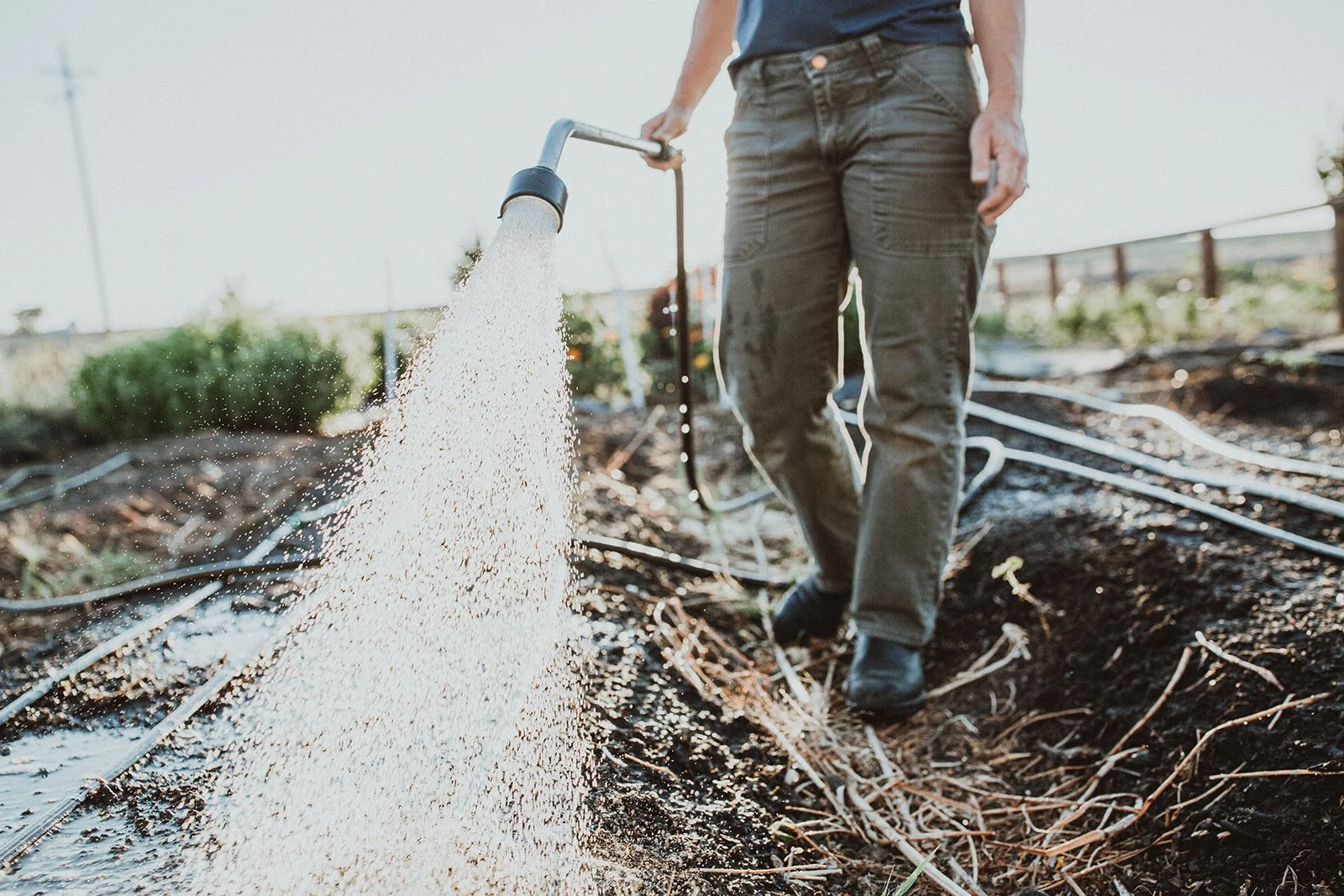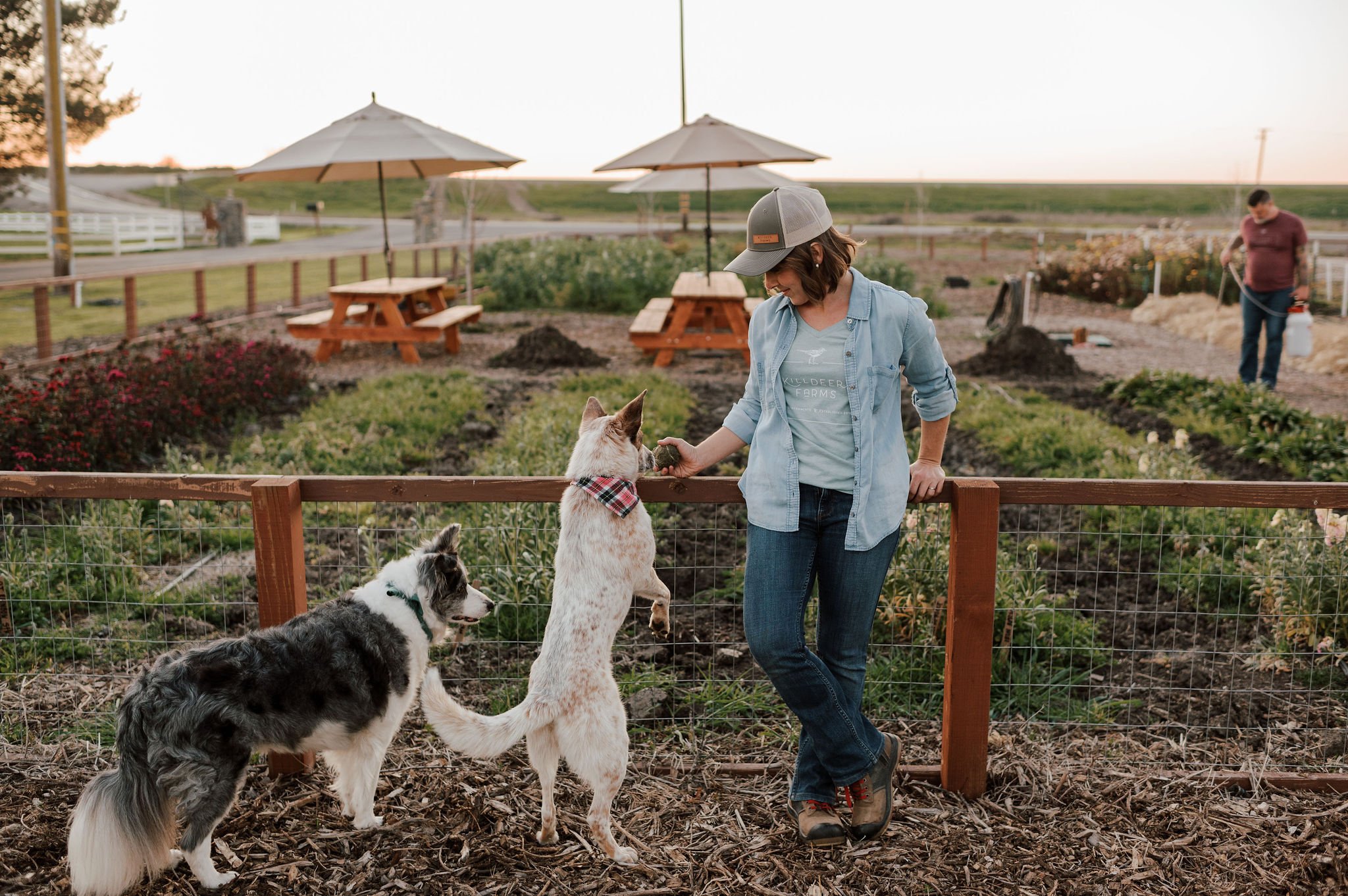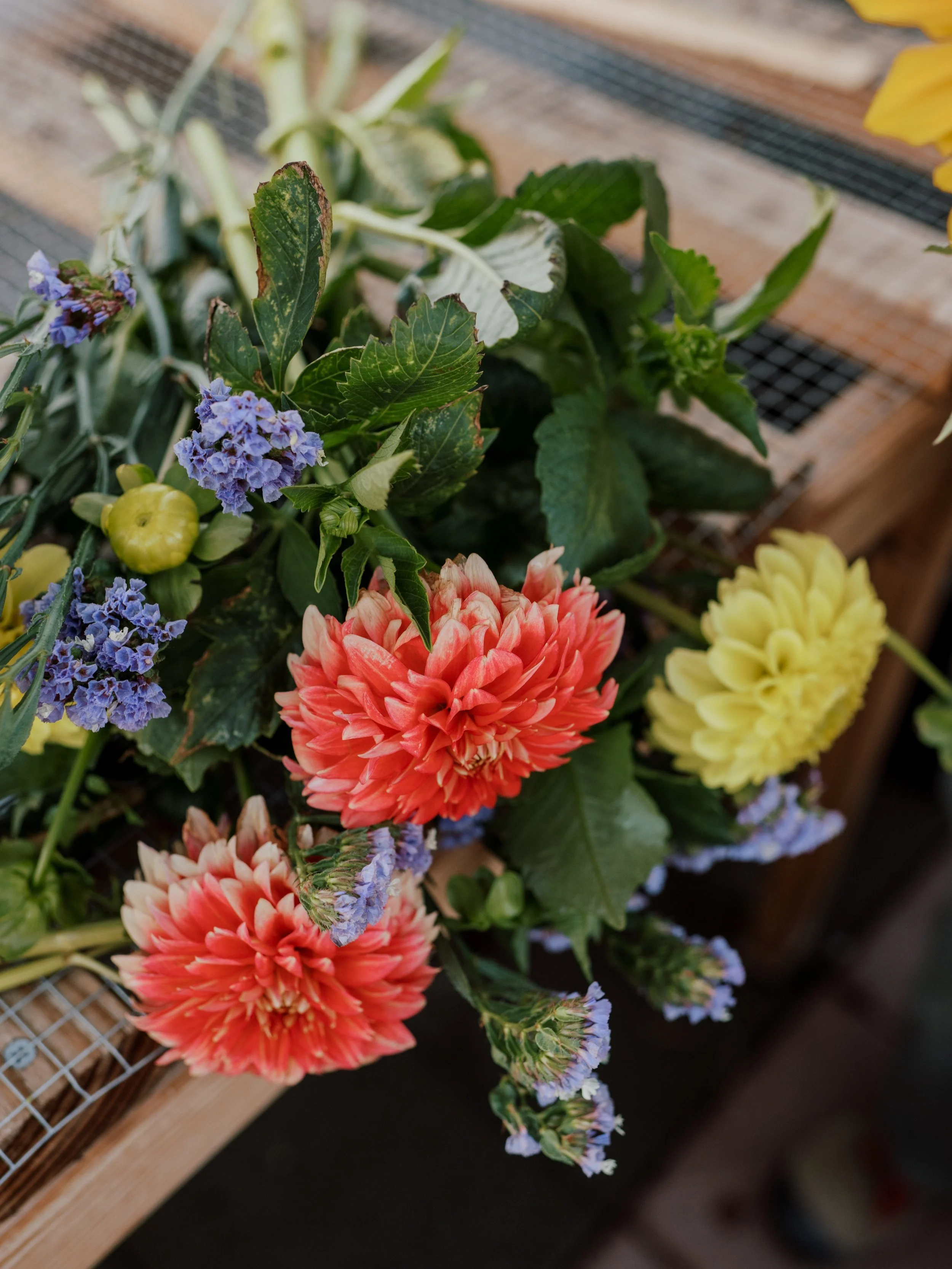WELCOME TO
RADICALLY ordinary HOSPITALITY
Killdeer Farms is open for special events and by appointment only.
For those who long for a return to a slower, more intentional life, we’ve purpose-built our farm as a respite for old-fashioned community on the outskirts of the big city. We invite you to sink your hands into the soil, reconnect with friends, and take home a bit of beauty to brighten your day.
Here you’ll find flowers, lavender and pumpkins grown under California sunshine using natural practices and a whole lot of gumption. But more importantly, you’ll find a welcoming hug, hot coffee on a chilly day, and plenty of time for long conversations.
During the growing season (typically April through October, depending on Mother Nature’s temperament), we open to the public on select days for flower markets, events, and gardening workshops. Our seasonal crops and farm-made goods will bring a smile to your face and joy to your kitchen counter.
P.S. There are bugs here.





Growing flowers. Building community.
Here’s the dirt.
Flower Farm FAQ
-
Yes and no. Our flower farm is our home, and we are not open to the public. However, we offer a variety of on-site markets, private you-pick picnics and gardening workshops throughout the season. Just know that it’s not as glamorous as we make it look on Instagram! Our little farm is a diamond in the rough. It requires a strong imagination and a good pair of shoes. We love dogs, but furry guests are not allowed.
-
Killdeer Farms is in its infancy, and that means we both still work our regular, full-time jobs. We are first and foremost a farm (not a flower shop), so we take very few orders for individuals and events. Flowers are available at our on-site markets, workshops and picnics.
-
Proper care is the key to a long-lasting bouquet. With a few easy steps, you can significantly extend the life of your arrangement:
Be sure to thoroughly sanitize your container before you begin, as any lingering bacteria will cause decay. I wash mine with hot, soapy water and a little bleach.
Cut flowers love cool temperatures and do not like direct sunlight or drafts, so display them away from windows, air conditioning vents and heaters.
Don’t keep your flowers by the fruit bowl. Ripening fruits release a gas called ethylene that makes some flowers fussy.
Change the water in your arrangement every other day.
Trim half an inch off your flower stems at least once a week and, if you can, re-sanitize your vase or container with hot water and a splash of vinegar or bleach.
-
It depends. Many factors contribute to vase life, and some flowers naturally die faster. Poppies, for example, last about three days, while zinnias and basil will blow past the two-week mark if properly cared for. The best way to maximize your bouquet is to give your flowers the TLC they need using the steps above and removing stems individually as they die so they don’t decay the vase.
-
We are first and foremost farmers, so we leave bridal bouquets and floral installations to the pros. But if you are having a small gathering and need table arrangements, we can support you with a maximum order of 25 arrangements. Orders must be placed at least three weeks in advance. Sacramento has a wonderful community of florists, and for larger events, we would be thrilled to refer you to a few of our favorites.
-
Well, for starters, did you know that 80 percent of the flowers sold in North America are imported? The heart of the global cut flower trade is the Netherlands, which supplies 40 percent of the world’s crop, but Colombia, Ecuador, Kenya, Belgium, and Ethiopia are also in the top 10. Many of those flowers — and for sure those long-stem red roses — are grown in massive production greenhouses using a variety of chemicals to ensure perfection.
Then, through a long and complex supply chain of workers, farmers, brokers and refrigerated airlines and cargo ships, they make their way into the hands of wholesalers who then sell to florists, who then sell to you.
By the time you get them, they’re two or three weeks old and have been handled dozens of times, decreasing their health and longevity. Alternatively, we can grow them for you down the street using California sunshine and our own bare hands.
-
Nope! You know that international import system I just mentioned? All those farms get to control their weather with big greenhouses and artificial heat and light. But not us. We’ve got as much growing in January as you: nada. In our region of Northern California, the growing season starts with spring bulbs and lasts through the first frost of late fall. (Unless we kill everything first, which, honestly, has happened.)





